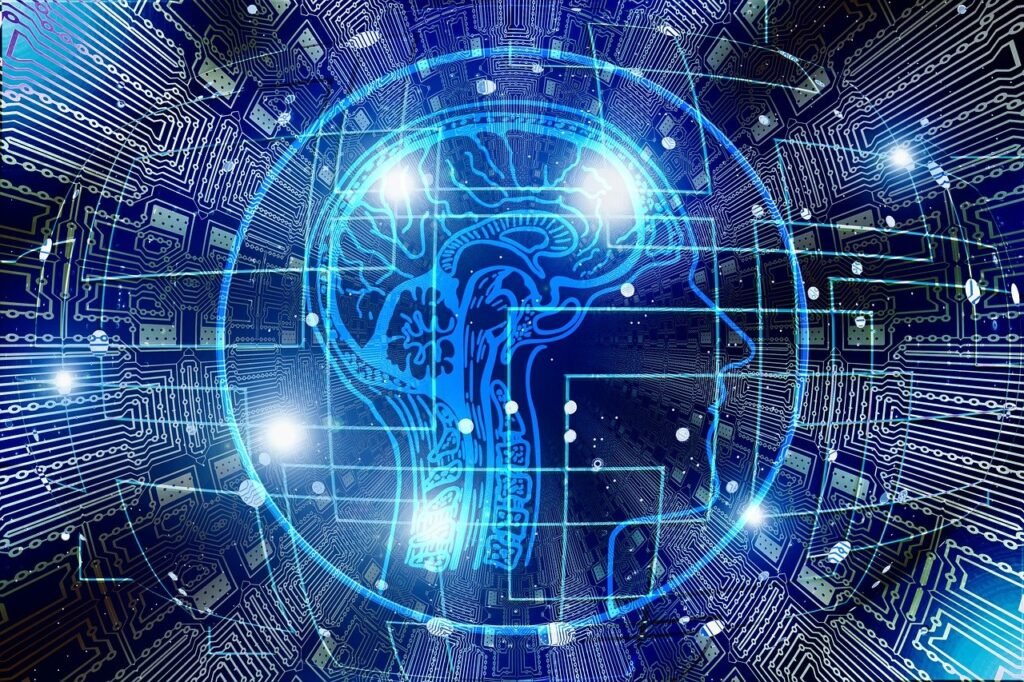Are you ready to revolutionize your business with cutting-edge technology? Look no further than our innovative solutions, paired with state-of-the-art equipment and machines. We understand the importance of staying ahead of the game in today’s fast-paced market, which is why we offer the latest advancements to help you streamline your operations, increase productivity, and achieve unparalleled results. With our state-of-the-art equipment and machines, you can expect enhanced efficiency, improved performance, and a significant competitive edge. Say goodbye to outdated methods and embrace the future of your industry with our innovative solutions.

This image is property of pixabay.com.
Automated Machinery
Advancements in automation technology
Automation technology has made significant advancements in recent years, revolutionizing the way industries operate and improving overall efficiency. With the introduction of sophisticated automated machinery, processes that were once time-consuming and labor-intensive can now be completed with ease and precision. These advancements have been made possible by the integration of advanced sensors, machine learning algorithms, and computer-controlled systems.
Benefits of automated machinery
The benefits of using automated machinery in various industries are numerous. Firstly, automated machinery eliminates the need for manual labor, reducing human error and increasing safety in the workplace. By automating repetitive tasks, businesses can also improve their productivity and output, ultimately leading to increased profitability. Furthermore, automated machinery allows for continuous operation without the need for breaks or rest, resulting in enhanced efficiency and reduced downtime.
Examples of automated machinery
Automated machinery can be found in a wide array of industries, including manufacturing, agriculture, healthcare, and logistics. In manufacturing, robots can perform complex assembly processes, increasing precision and speed. In agriculture, automated machinery such as automated harvesters and drones can optimize crop yield and reduce labor costs. In the healthcare sector, automated machinery can assist in medical diagnosis and surgeries, ensuring accurate and efficient procedures. In logistics and warehousing, automated machinery can be used for inventory management, sorting, and packaging, streamlining the entire supply chain process.
Artificial Intelligence
Integration of AI in machines
Artificial Intelligence (AI) has emerged as a game-changer in various industries, with its ability to mimic human intelligence and perform tasks that traditionally required human intervention. Integration of AI in machines has enabled them to acquire knowledge, analyze data, and make decisions autonomously. AI algorithms, powered by machine learning and deep learning techniques, allow machines to continuously learn from their environment and improve their performance over time.
Enhancement of performance and efficiency
By integrating AI into machines, their performance and efficiency can be significantly enhanced. AI-powered machines can process vast amounts of data in real-time, allowing for quicker decision-making and more precise actions. This not only reduces the risk of errors but also improves overall operational efficiency. Additionally, AI can optimize resource allocation, minimize energy consumption, and even predict maintenance requirements, leading to cost savings and increased sustainability.
Applications of AI in various industries
The applications of AI span across numerous industries, from healthcare to finance, and manufacturing to transportation. In healthcare, AI-powered machines can aid in accurate diagnosis, assist in surgical procedures, and even facilitate drug discovery and development. In finance, AI algorithms can analyze market trends, predict investment opportunities, and enhance fraud detection. In manufacturing, AI can optimize production scheduling, monitor quality control, and predict equipment failures. In transportation, AI can enable autonomous vehicles, optimize logistics, and improve traffic management. The possibilities are limitless.

This image is property of pixabay.com.
Internet of Things (IoT)
Overview of IoT
The Internet of Things (IoT) refers to the interconnection of physical devices, sensors, and machines through the internet, enabling them to collect and exchange data. IoT technology has transformed the way machines and equipment operate, allowing for increased automation, improved efficiency, and enhanced decision-making capabilities. By connecting devices and machines to a centralized platform, businesses can monitor and control their operations remotely, in real-time.
Implementation of IoT in equipment and machines
IoT technology has been widely implemented in various equipment and machines, enabling them to communicate and share data seamlessly. Sensors embedded in equipment can collect valuable insights on factors such as temperature, humidity, and performance metrics. This data can then be transmitted to a central system or the cloud for analysis and decision-making. By leveraging IoT, businesses can gain valuable insights into the performance and condition of their equipment, enabling proactive maintenance and optimization of operations.
Advantages of IoT in industrial processes
The advantages of implementing IoT in industrial processes are manifold. Firstly, IoT enables real-time monitoring and analytics, allowing businesses to detect anomalies and inefficiencies in their operations. This enables proactive maintenance, reducing downtime and increasing productivity. Additionally, IoT can improve safety by monitoring and detecting potential hazards. For example, in manufacturing plants, IoT sensors can detect high temperatures or hazardous gas leaks, enabling prompt action to be taken. Lastly, IoT allows for the integration of equipment and machines with other systems and platforms, enabling seamless communication and coordination across the entire supply chain.
Robotics
Evolution of robotics in manufacturing
Robotics has evolved significantly over the years, transforming the manufacturing industry and improving productivity. Initially, robots were limited to performing repetitive tasks in structured environments. However, with advancements in technology, robots are now capable of complex tasks and versatile operations. Industrial robots can now handle delicate tasks, collaborate with humans in shared workspaces, and even adapt to changing production requirements.
Role of robots in improving productivity
Robots play a crucial role in improving productivity in manufacturing processes. They can perform tasks with greater speed and precision compared to human workers, leading to increased efficiency and output. Robots can work continuously without breaks, reducing production downtime. Moreover, robots can handle hazardous or repetitive tasks, minimizing the risk of accidents and injuries in the workplace. By automating various aspects of production, companies can achieve higher production rates, improve product quality, and reduce costs.
Future trends in robotic technology
The future of robotic technology holds tremendous potential for further advancements. Collaborative robots, also known as cobots, are expected to become more prevalent in manufacturing environments, working alongside human workers rather than replacing them. Additionally, advancements in artificial intelligence will enable robots to acquire more complex skills, such as problem-solving and decision-making, further enhancing their capabilities. Furthermore, robots will become more adaptable and versatile, with the ability to perform a wide range of tasks and adapt to dynamic production requirements. The future of robotics is exciting and holds the promise of even greater efficiency and productivity in industries.

This image is property of pixabay.com.
Virtual Reality (VR) and Augmented Reality (AR)
Utilization of VR and AR in equipment and machines
Virtual Reality (VR) and Augmented Reality (AR) technologies have transformed the way equipment and machines are designed, manufactured, and operated. VR allows users to immerse themselves in a virtual environment, while AR overlays virtual objects onto the real world. In the context of equipment and machines, VR and AR can be utilized for design simulations, virtual prototyping, and even remote maintenance and repair operations. By using VR and AR, businesses can visualize and interact with equipment in a realistic and immersive manner, enhancing both the design and operational aspects.
Training and simulation applications
VR and AR have immense potential in training and simulation applications. In industries such as aviation and manufacturing, VR can be used to provide realistic and immersive training experiences, allowing operators to practice complex procedures and familiarize themselves with equipment before being deployed in real-world scenarios. AR, on the other hand, can overlay real-time information onto the field of view, enabling operators to receive contextual information and guidance while performing tasks. Virtual training and simulation not only improve operator skills and efficiency but also reduce training costs and minimize the risk of errors or accidents.
Potential for enhanced user experience
The utilization of VR and AR in equipment and machines also opens up the potential for enhanced user experiences. For example, in the automotive industry, VR can enable customers to visualize and customize their vehicles before making a purchase decision. In architecture and construction, VR can offer virtual walkthroughs of buildings and structures, facilitating better decision-making and collaboration. AR can provide operators with real-time instructions and visual cues, enabling them to perform tasks more efficiently and accurately. Overall, VR and AR have the ability to transform the way users interact with equipment and machines, enhancing usability and overall satisfaction.
3D Printing
Introduction to 3D printing technology
3D printing technology, also known as additive manufacturing, has revolutionized the manufacturing industry by enabling the creation of complex three-dimensional objects from digital models. Traditional manufacturing methods often involve subtractive processes, where material is removed from a block to form the desired object. In contrast, 3D printing builds objects layer by layer, using a range of materials such as plastics, metals, and even biological matter. This technology allows for greater design freedom, reduced production time, and the ability to produce customized and intricate parts or prototypes.
Applications of 3D printing in various industries
The applications of 3D printing are vast and continue to expand across various industries. In the automotive industry, 3D printing is used for rapid prototyping, reducing development time and costs. In healthcare, 3D printing enables the creation of patient-specific medical implants, customized prosthetics, and even organ and tissue engineering. In aerospace, 3D printing is utilized to manufacture lightweight and complex components, enhancing fuel efficiency and reducing costs. In the consumer goods industry, 3D printing allows for customized and personalized products. The versatility and flexibility of 3D printing make it a valuable tool in many industries.
Advantages of using 3D printing in manufacturing
The advantages of using 3D printing in manufacturing processes are significant. Firstly, 3D printing offers design freedom, as complex and intricate structures can be easily produced without the constraints of traditional manufacturing methods. This enables greater innovation and customization of products. Secondly, 3D printing reduces lead times, as objects can be produced directly from a digital file without the need for tooling or molds. This speeds up the production process and allows for rapid prototyping and iteration. Additionally, 3D printing minimizes material waste, as only the required amount of material is used, resulting in cost savings and increased sustainability.
Advanced Sensors and Monitoring Systems
Role of sensors in equipment and machines
Advanced sensors play a crucial role in equipment and machines, enabling real-time data collection and monitoring. Sensors can measure parameters such as temperature, pressure, vibration, and humidity, providing valuable insights into the performance and condition of equipment. By continuously monitoring these parameters, businesses can detect anomalies, predict failures, and optimize operations. Sensors are typically interconnected with a centralized system or the cloud, enabling remote monitoring and control.
Real-time monitoring and data analysis
By utilizing advanced sensors, equipment and machines can be monitored in real-time, providing businesses with critical information about their performance. This real-time monitoring allows for proactive maintenance, as potential issues can be identified and addressed before they lead to equipment failure or downtime. Furthermore, the data collected by sensors can be analyzed using machine learning algorithms, uncovering patterns and trends that would otherwise be difficult to detect. This data analysis enables businesses to make data-driven decisions, optimize processes, and improve overall efficiency.
Optimization of performance and maintenance
Advanced sensors and monitoring systems enable businesses to optimize the performance and maintenance of their equipment. By continuously collecting and analyzing data, businesses can identify areas for improvement and implement preventative maintenance strategies. Predictive maintenance, enabled by advanced sensors, allows for the identification of potential equipment failures before they occur. This reduces downtime, extends equipment lifespan, and minimizes costly repairs. Additionally, by tracking performance metrics, such as energy consumption or production efficiency, businesses can identify opportunities for optimization and implement measures to further enhance operational performance.
Cloud Computing and Big Data Analytics
Utilization of cloud computing in industrial processes
Cloud computing has transformed the way industries handle data and manage their operations. By utilizing cloud computing, businesses can store and access large amounts of data securely and efficiently. In industrial processes, cloud computing enables the centralized storage and analysis of data collected from equipment and machines. This data can be accessed from any location, allowing for remote monitoring and control. Furthermore, cloud computing provides scalability and flexibility, as businesses can easily adapt their storage and processing capabilities to meet changing requirements.
Benefits of big data analytics in equipment management
Big data analytics is a powerful tool that can extract valuable insights from large datasets. In equipment management, big data analytics allows for the identification of patterns, correlations, and anomalies that may not be evident through traditional data analysis methods. By analyzing these large datasets, businesses can gain a deeper understanding of the performance and condition of their equipment, enabling them to make data-driven decisions. Furthermore, big data analytics can uncover optimization opportunities, identify maintenance requirements, and even predict future performance or failures.
Predictive maintenance and process optimization
One of the key benefits of cloud computing and big data analytics is the ability to implement predictive maintenance strategies. By analyzing data collected from sensors and monitoring systems, businesses can identify patterns and trends that indicate potential equipment failures. This allows for the proactive scheduling of maintenance, leading to reduced downtime and improved operational efficiency. Additionally, by utilizing big data analytics, businesses can optimize their processes by identifying bottlenecks, inefficiencies, and areas for improvement. By leveraging the power of cloud computing and big data analytics, businesses can achieve greater operational excellence and maximize their productivity.
Blockchain Technology
Overview of blockchain technology
Blockchain technology is a decentralized and transparent digital ledger that records transactions across multiple computers and ensures the integrity and security of data. Each transaction, or block, is added to a chain, forming a permanent and tamper-proof record of events. Blockchain technology eliminates the need for intermediaries, such as banks or trusted third parties, as transactions are verified and validated by a network of participants. This technology has gained traction in various industries due to its potential for increased security, transparency, and efficiency.
Applications of blockchain in supply chains
The application of blockchain technology in supply chains has gained significant attention in recent years. Blockchain provides increased visibility and traceability throughout the supply chain, as each transaction and movement of goods can be recorded and verified. This enhances transparency and reduces the risk of fraud or counterfeit products. Additionally, blockchain technology enables the implementation of smart contracts, which are self-executing contracts with predefined conditions. Smart contracts can automate various aspects of supply chain processes, such as payment verification or contract enforcement, streamlining operations and reducing administrative burdens.
Enhanced security and transparency in equipment transactions
Blockchain technology offers enhanced security and transparency in equipment transactions. By recording equipment transactions on a blockchain, businesses can ensure the authenticity and integrity of the transaction records. This reduces the risk of fraud or tampering and eliminates the need for manual verification processes. Furthermore, blockchain-based transactions can be executed more efficiently, as they eliminate the need for intermediaries and reduce the associated costs and delays. The transparency provided by blockchain technology also enhances trust among participants, as all parties have access to the same verified information.
Nanotechnology
Miniaturization of equipment and machines
Nanotechnology involves the manipulation of matter at the nanoscale, typically at the atomic or molecular level. This technology has enabled the miniaturization of equipment and machines, leading to significant advancements in various industries. Miniaturization allows for increased portability, reduced energy consumption, and enhanced performance. Nanotechnology has paved the way for the development of smaller, faster, and more efficient devices, from microprocessors to medical implants.
Advancements in materials and manufacturing processes
Nanotechnology has also brought about advancements in materials and manufacturing processes. By manipulating materials at the nanoscale, researchers and engineers can create new materials with unique properties and characteristics. For example, carbon nanotubes are exceptionally strong and lightweight, making them ideal for applications in aerospace and automotive industries. Nanotechnology has also enabled the development of nanomaterials with enhanced conductivity, heat resistance, or optical properties. These advancements in materials have opened up new possibilities for manufacturing processes, enabling the production of more efficient and durable products.
Potential for revolutionary applications
The potential for revolutionary applications of nanotechnology is vast. In the healthcare industry, nanotechnology has the potential to transform drug delivery systems, enabling targeted and personalized treatments. Nanoparticles can be designed to deliver drugs to specific areas of the body, improving efficacy and reducing side effects. In electronics, nanotechnology allows for the development of smaller and more powerful devices, such as nanoscale transistors or memory chips. Nanotechnology also holds promise for energy applications, as nanomaterials can be utilized for more efficient solar cells or energy storage devices. The potential of nanotechnology to drive innovation and transform various industries is truly remarkable.
In conclusion, state-of-the-art equipment and machines have become increasingly innovative through the integration of automation technology, artificial intelligence, IoT, robotics, virtual reality, 3D printing, advanced sensors and monitoring systems, cloud computing, big data analytics, blockchain technology, and nanotechnology. These advancements have revolutionized industries by increasing efficiency, improving productivity, enhancing user experiences, and enabling new applications. As technology continues to evolve, the potential for further innovation and transformative solutions will undoubtedly shape the future of equipment and machine capabilities. Embracing these state-of-the-art technologies is essential for businesses to stay competitive in a rapidly advancing world.
